
Rabbit Anti-Amphiregulin antibody
AR; Colorectum cell derived growth factor; CRDGF; A REG; AR antibody; AREG; Colorectum cell derived growth factor; CRDGF; MGC13647; Schwannoma derived growth factor; SDGF; AREG_HUMAN.
View History [Clear]
Details
Product Name Amphiregulin Chinese Name 双调蛋白/结肠直肠细胞源性生长因子抗体 Alias AR; Colorectum cell derived growth factor; CRDGF; A REG; AR antibody; AREG; Colorectum cell derived growth factor; CRDGF; MGC13647; Schwannoma derived growth factor; SDGF; AREG_HUMAN. literatures Research Area Tumour Cell biology immunology Neurobiology Growth factors and hormones transcriptional regulatory factor Immunogen Species Rabbit Clonality Polyclonal React Species Human, Mouse, Rat, (predicted: Dog, Cow, Horse, Rabbit, Sheep, ) Applications WB=1:500-2000 ELISA=1:5000-10000 IHC-P=1:100-500 IHC-F=1:100-500 IF=1:100-500 (Paraffin sections need antigen repair)
not yet tested in other applications.
optimal dilutions/concentrations should be determined by the end user.Theoretical molecular weight 16kDa Cellular localization The cell membrane Form Liquid Concentration 1mg/ml immunogen KLH conjugated synthetic peptide derived from human Amphiregulin: 185-252/252 Lsotype IgG Purification affinity purified by Protein A Buffer Solution 0.01M TBS(pH7.4) with 1% BSA, 0.03% Proclin300 and 50% Glycerol. Storage Shipped at 4℃. Store at -20 °C for one year. Avoid repeated freeze/thaw cycles. Attention This product as supplied is intended for research use only, not for use in human, therapeutic or diagnostic applications. PubMed PubMed Product Detail Amphiregulin expression is induced by phorbol ester, estrogen, androgen, and other EGFR ligands. In vitro, amphiregulin functions as an autocrine growth stimulator to drive proliferation of colon carcinoma cells, normal and oncogene-transformed mammary epithelial cells, cervical carcinoma cells, prostate cancer cells, and keratinocytes. Amphiregulin is important in the development of human placenta and murine mammary gland. It is reportedly overexpressed in human cancers of breast, colon, stomach and pancreas.
Function:
Ligand of the EGF receptor/EGFR. Autocrine growth factor as well as a mitogen for a broad range of target cells including astrocytes, Schwann cells and fibroblasts.
Subunit:
The immature precursor interacts with CNIH.
Subcellular Location:
Membrane; Single-pass membrane protein.
Similarity:
Belongs to the amphiregulin family.
Contains 1 EGF-like domain.
SWISS:
P15514
Gene ID:
374
Database links:Entrez Gene: 374 Human
Entrez Gene: 727738 Human
Entrez Gene: 11839 Mouse
Omim: 104640 Human
SwissProt: P15514 Human
SwissProt: P31955 Mouse
Unigene: 270833 Human
Unigene: 645475 Human
Unigene: 8039 Mouse
Product Picture
Lane 1: Mouse Placenta tissue lysates
Lane 2: Mouse Breast tissue lysates
Lane 3: Mouse Testis tissue lysates
Lane 4: Rat Placenta tissue lysates
Lane 5: Rat Breast tissue lysates
Lane 6: Rat Testis tissue lysates
Lane 7: Human MCF-7 cell lysates
Lane 8: Human HepG2 cell lysates
Lane 9: Human A431 cell lysates
Primary: Anti- Amphiregulin (SL3847R) at 1/1000 dilution
Secondary: IRDye800CW Goat Anti-Rabbit IgG at 1/20000 dilution
Predicted band size: 16 kDa
Observed band size: 47 kDa
Sample:
A549(Human) Cell Lysate at 30 ug
Primary: Anti-Amphiregulin (SL3847R) at 1/500 dilution
Secondary: IRDye800CW Goat Anti-Rabbit IgG at 1/20000 dilution
Predicted band size: 26 kD
Observed band size: 41 kD
Sample:
HepG2(Human) Cell Lysate at 30 ug
Primary: Anti-Amphiregulin (SL3847R) at 1/2000 dilution
Secondary: IRDye800CW Goat Anti-Rabbit IgG at 1/20000 dilution
Predicted band size: 26 kD
Observed band size: 41 kD
Paraformaldehyde-fixed, paraffin embedded (Rat brain); Antigen retrieval by boiling in sodium citrate buffer (pH6.0) for 15min; Block endogenous peroxidase by 3% hydrogen peroxide for 20 minutes; Blocking buffer (normal goat serum) at 37°C for 30min; Antibody incubation with (Amphiregulin) Polyclonal Antibody, Unconjugated (SL3847R) at 1:400 overnight at 4°C, followed by operating according to SP Kit(Rabbit) (sp-0023) instructions and DAB staining.Paraformaldehyde-fixed, paraffin embedded (human liver carcinoma); Antigen retrieval by boiling in sodium citrate buffer (pH6.0) for 15min; Block endogenous peroxidase by 3% hydrogen peroxide for 20 minutes; Blocking buffer (normal goat serum) at 37°C for 30min; Antibody incubation with (Amphiregulin) Polyclonal Antibody, Unconjugated (SL3847R) at 1:200 overnight at 4°C, followed by operating according to SP Kit(Rabbit) (sp-0023) instructions and DAB staining.Paraformaldehyde-fixed, paraffin embedded (human gastric carcinoma); Antigen retrieval by boiling in sodium citrate buffer (pH6.0) for 15min; Block endogenous peroxidase by 3% hydrogen peroxide for 20 minutes; Blocking buffer (normal goat serum) at 37°C for 30min; Antibody incubation with (Amphiregulin) Polyclonal Antibody, Unconjugated (SL3847R) at 1:200 overnight at 4°C, followed by operating according to SP Kit(Rabbit) (sp-0023) instructions and DAB staining.Paraformaldehyde-fixed, paraffin embedded (human tonsil); Antigen retrieval by boiling in sodium citrate buffer (pH6.0) for 15min; Block endogenous peroxidase by 3% hydrogen peroxide for 20 minutes; Blocking buffer (normal goat serum) at 37°C for 30min; Antibody incubation with (Amphiregulin) Polyclonal Antibody, Unconjugated (SL3847R) at 1:200 overnight at 4°C, followed by operating according to SP Kit(Rabbit) (sp-0023) instructions and DAB staining.Tissue/cell: mouse embryo tissue;4% Paraformaldehyde-fixed and paraffin-embedded;
Antigen retrieval: citrate buffer ( 0.01M, pH 6.0 ), Boiling bathing for 15min; Blocking buffer (normal goat serum,C-0005) at 37℃ for 20 min;
Incubation: Anti-Amphiregulin Polyclonal Antibody, Unconjugated(SL3847R) 1:200, overnight at 4°C; The secondary antibody was Goat Anti-Rabbit IgG, Cy3 conjugated(SL0295G-Cy3)used at 1:200 dilution for 40 minutes at 37°C. DAPI(5ug/ml,blue,C-0033) was used to stain the cell nuclei
Tissue/cell: mouse fetal liver;4% Paraformaldehyde-fixed and paraffin-embedded;
Antigen retrieval: citrate buffer ( 0.01M, pH 6.0 ), Boiling bathing for 15min; Blocking buffer (normal goat serum,C-0005) at 37℃ for 20 min;
Incubation: Anti-Amphiregulin Polyclonal Antibody, Unconjugated(SL3847R) 1:200, overnight at 4°C; The secondary antibody was Goat Anti-Rabbit IgG, Cy3 conjugated(SL0295G-Cy3)used at 1:200 dilution for 40 minutes at 37°C. DAPI(5ug/ml,blue,C-0033) was used to stain the cell nuclei
Tissue/cell: mouse fetal intestine;4% Paraformaldehyde-fixed and paraffin-embedded;
Antigen retrieval: citrate buffer ( 0.01M, pH 6.0 ), Boiling bathing for 15min; Blocking buffer (normal goat serum,C-0005) at 37℃ for 20 min;
Incubation: Anti-Amphiregulin Polyclonal Antibody, Unconjugated(SL3847R) 1:200, overnight at 4°C; The secondary antibody was Goat Anti-Rabbit IgG, Cy3 conjugated(SL0295G-Cy3)used at 1:200 dilution for 40 minutes at 37°C. DAPI(5ug/ml,blue,C-0033) was used to stain the cell nuclei
Blank control:A549.
Primary Antibody (green line): Rabbit Anti-Amphiregulin antibody (SL3847R)
Dilution: 1μg /10^6 cells;
Isotype Control Antibody (orange line): Rabbit IgG .
Secondary Antibody : Goat anti-rabbit IgG-PE
Dilution: 1μg /test.
Protocol
The cells were fixed with 4% PFA (10min at room temperature)and then permeabilized with 20% PBST for 20 min at-20℃. The cells were then incubated in 5%BSA to block non-specific protein-protein interactions for 30 min at at room temperature .Cells stained with Primary Antibody for 30 min at room temperature. The secondary antibody used for 40 min at room temperature. Acquisition of 20,000 events was performed.
Bought notes(bought amounts latest0)
No one bought this product
User Comment(Total0User Comment Num)
- No comment
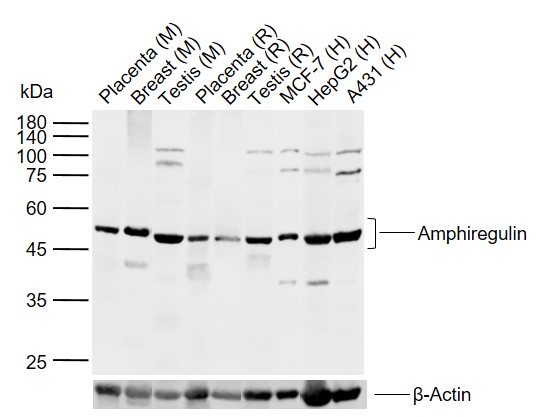
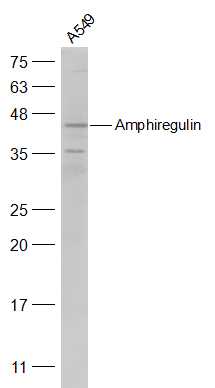
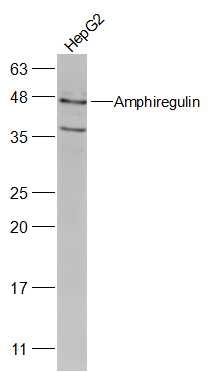
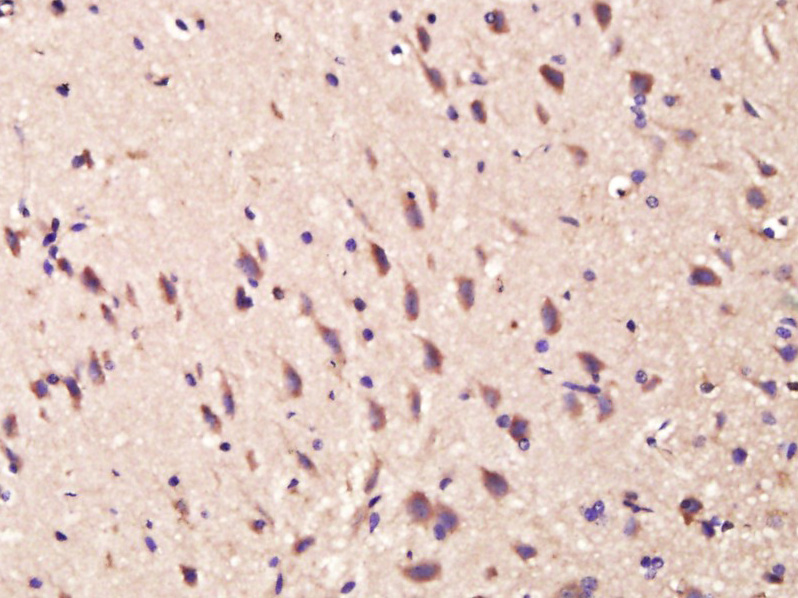
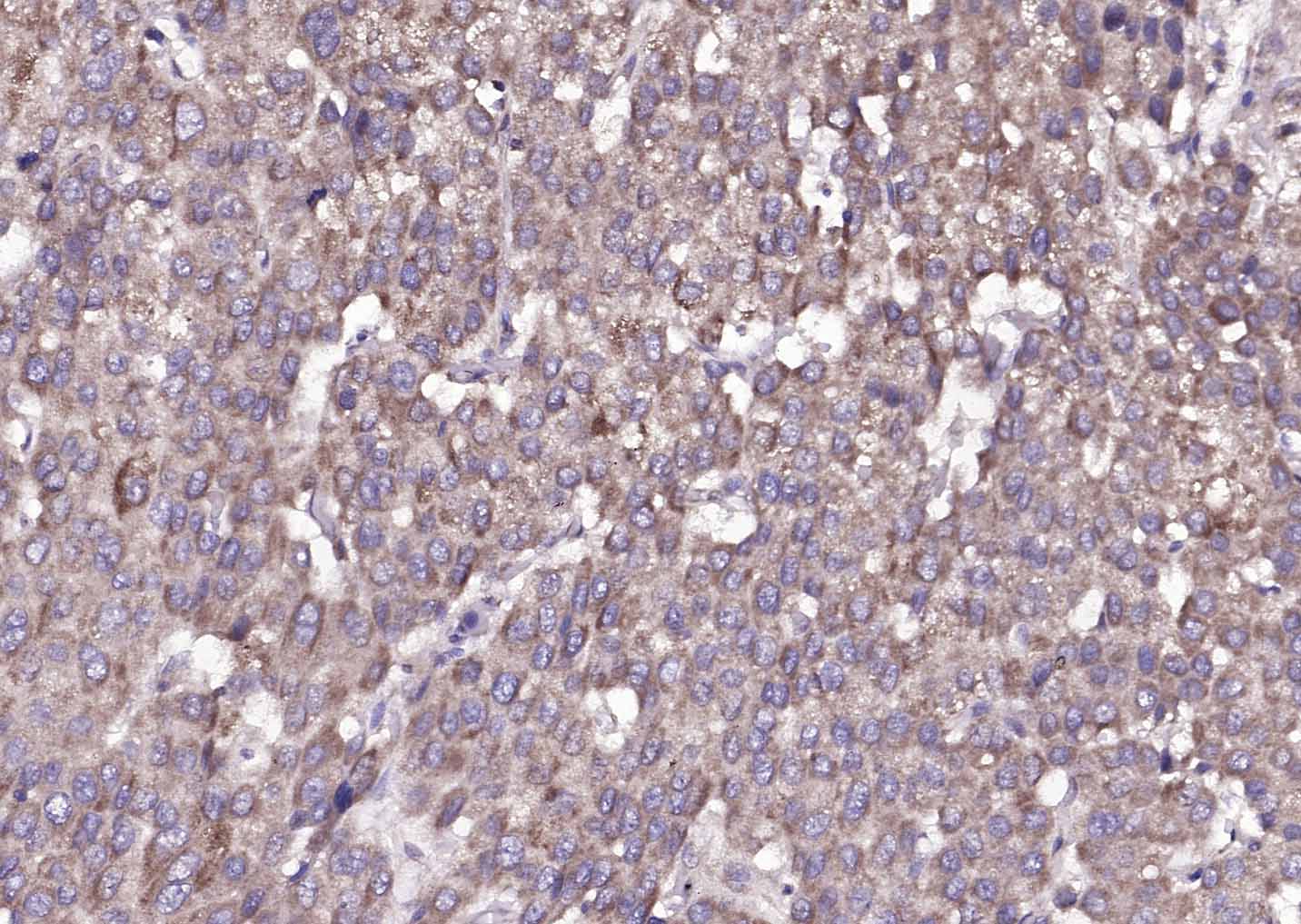
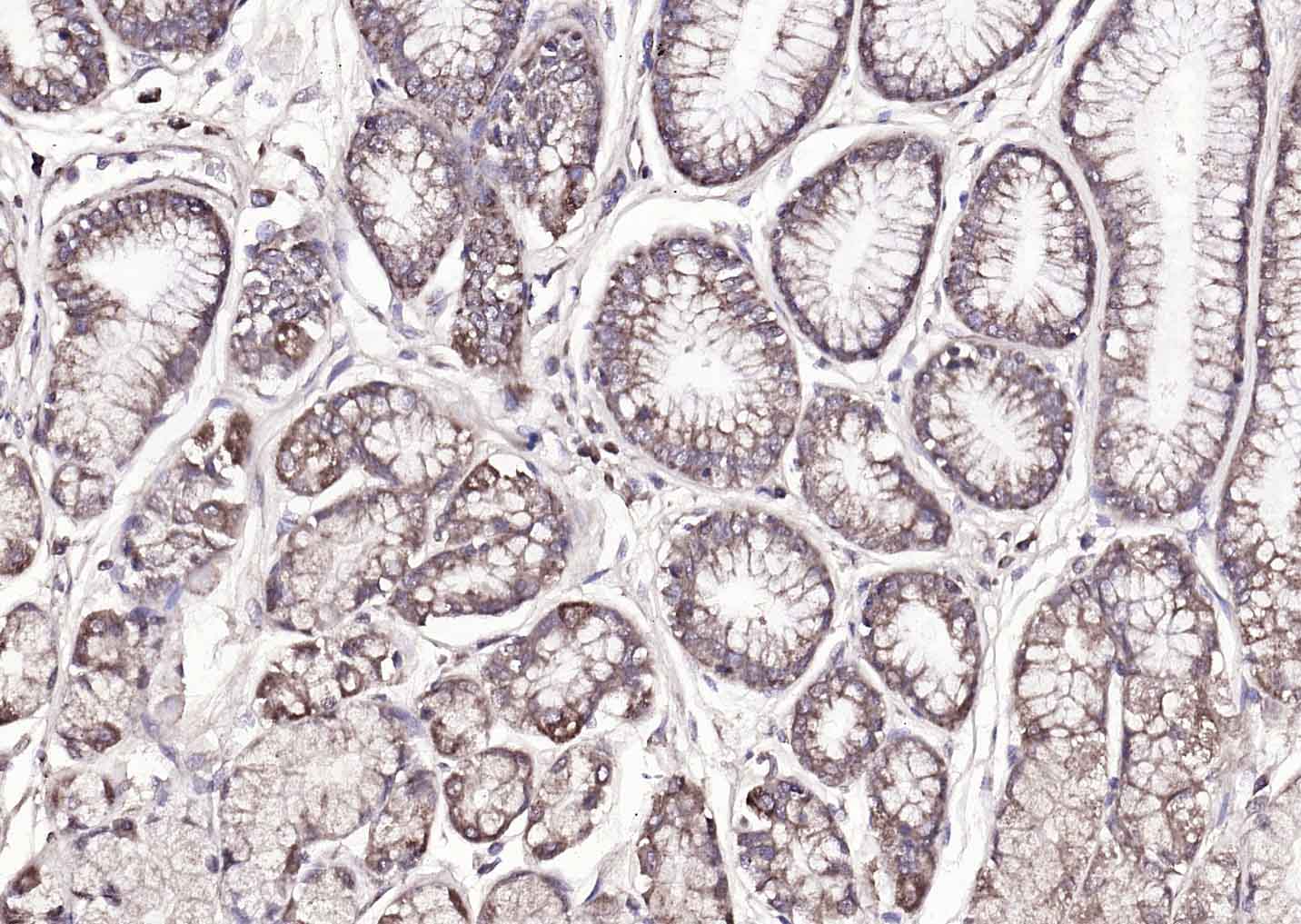
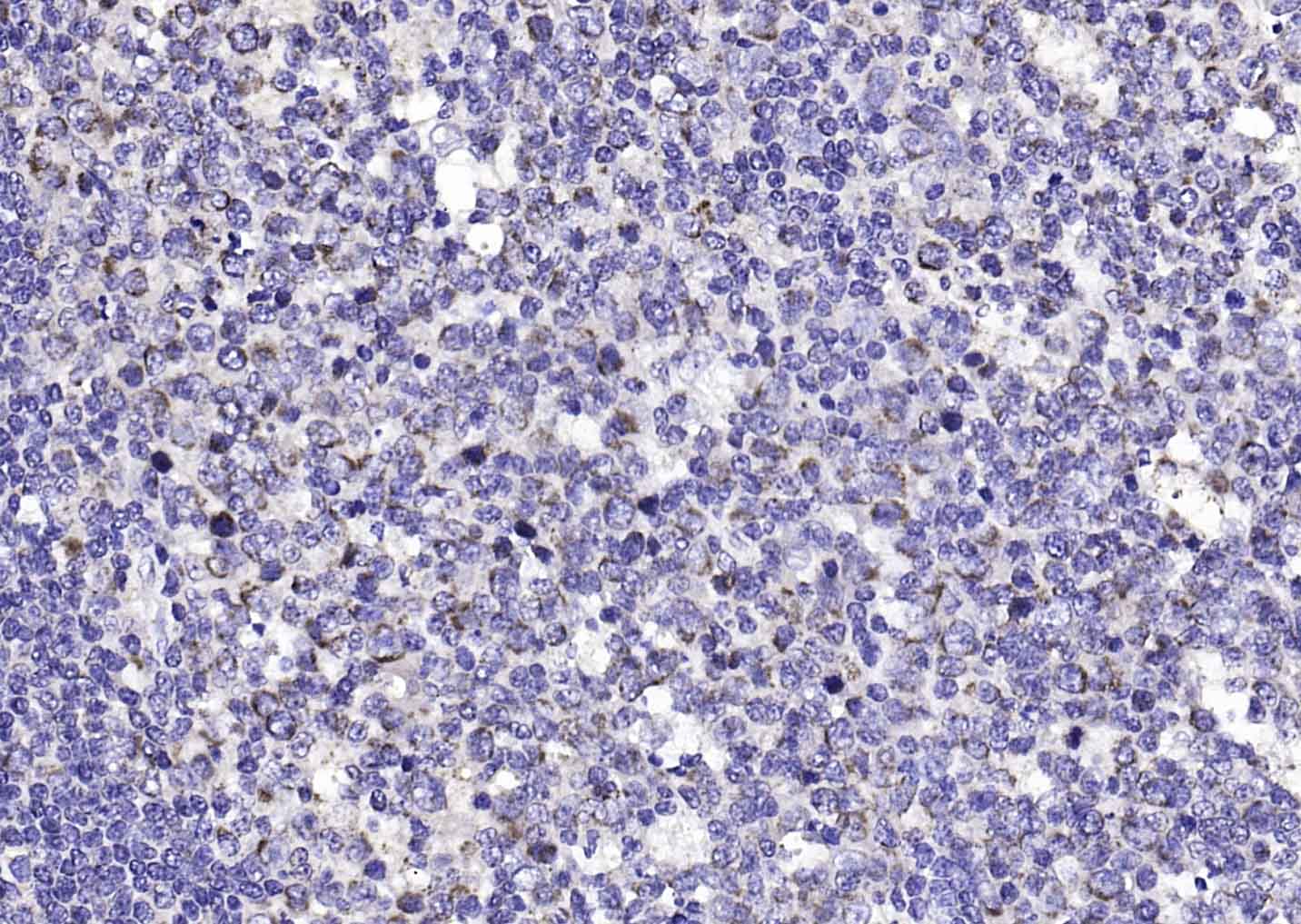
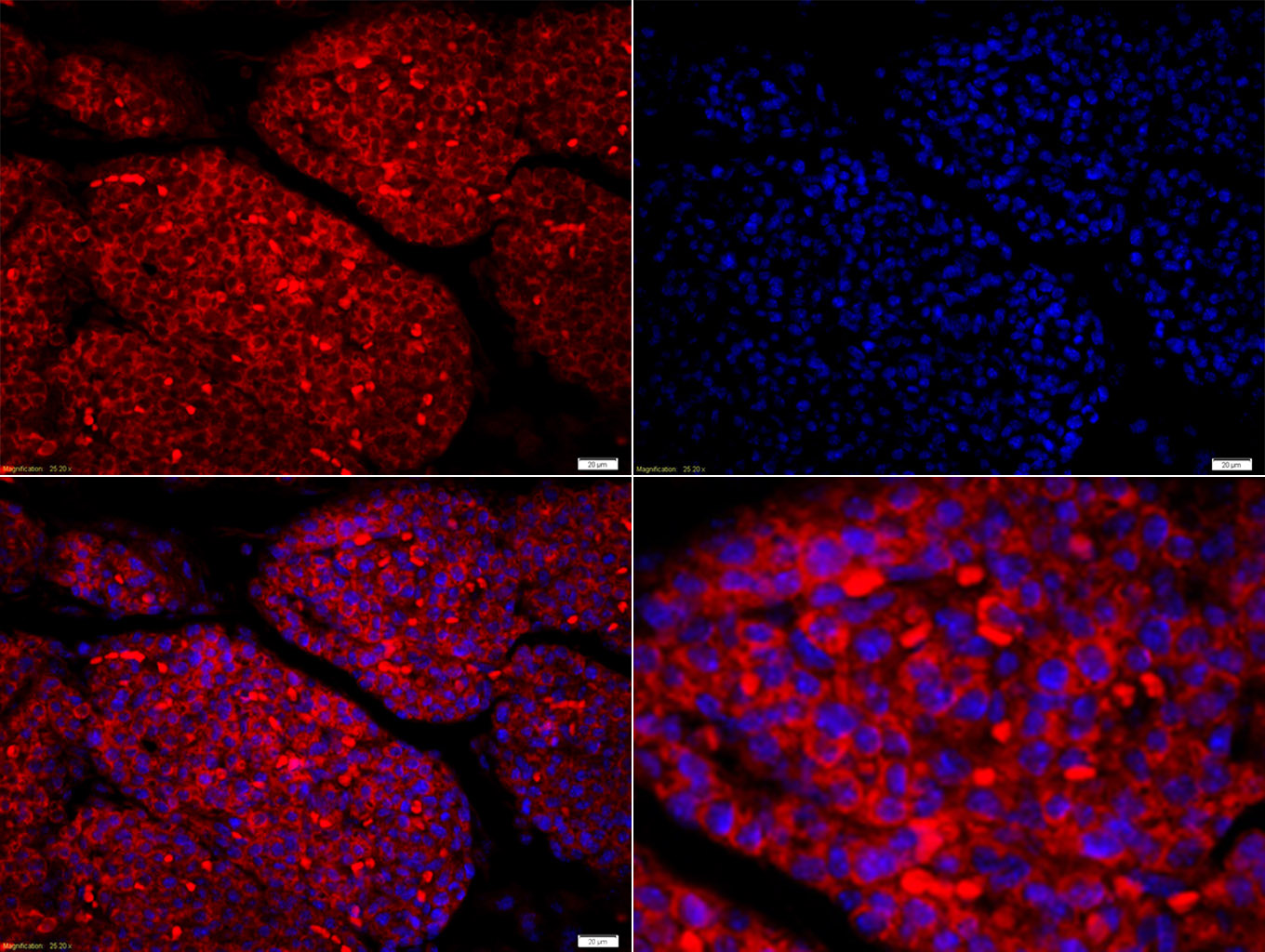
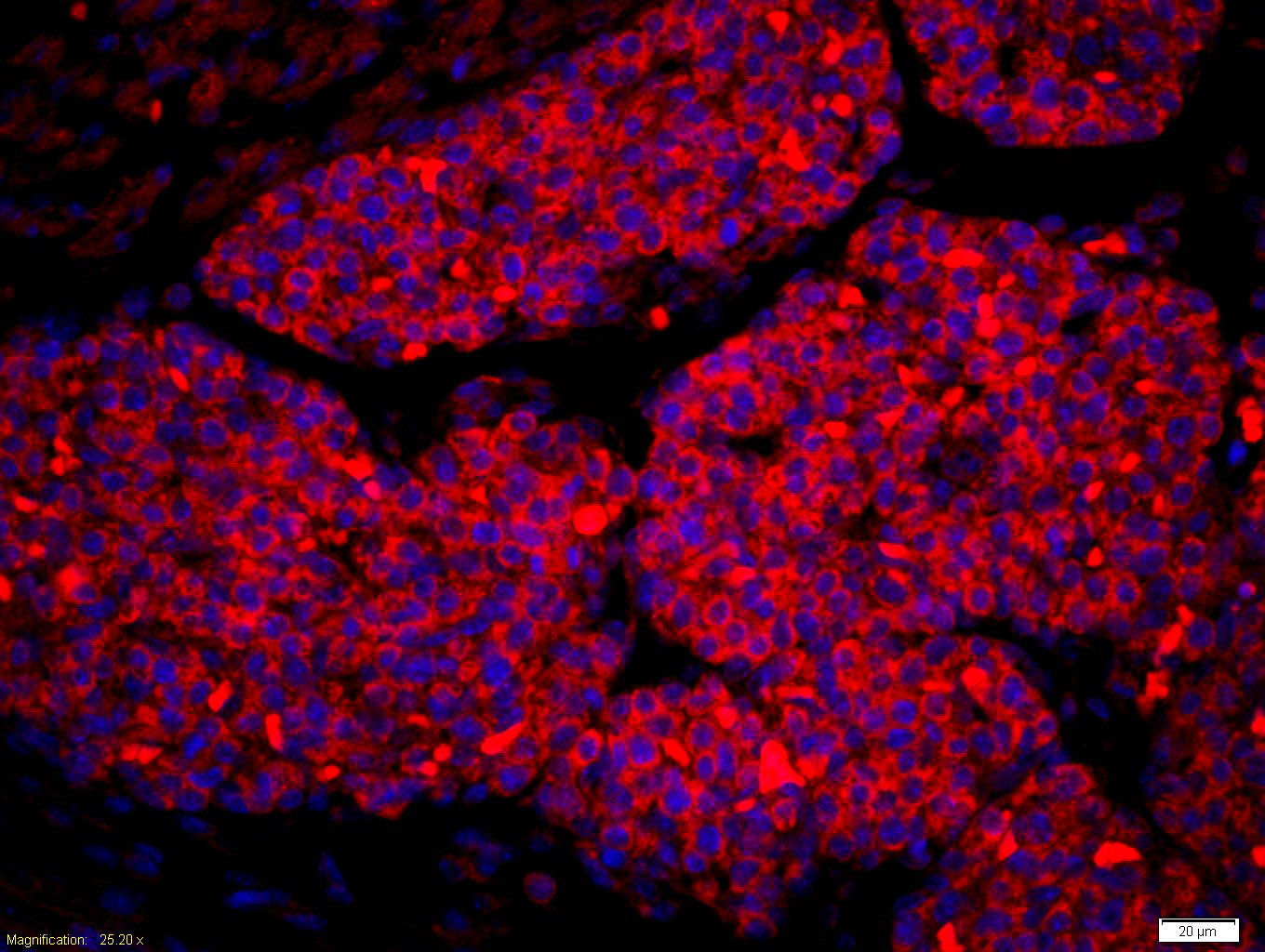
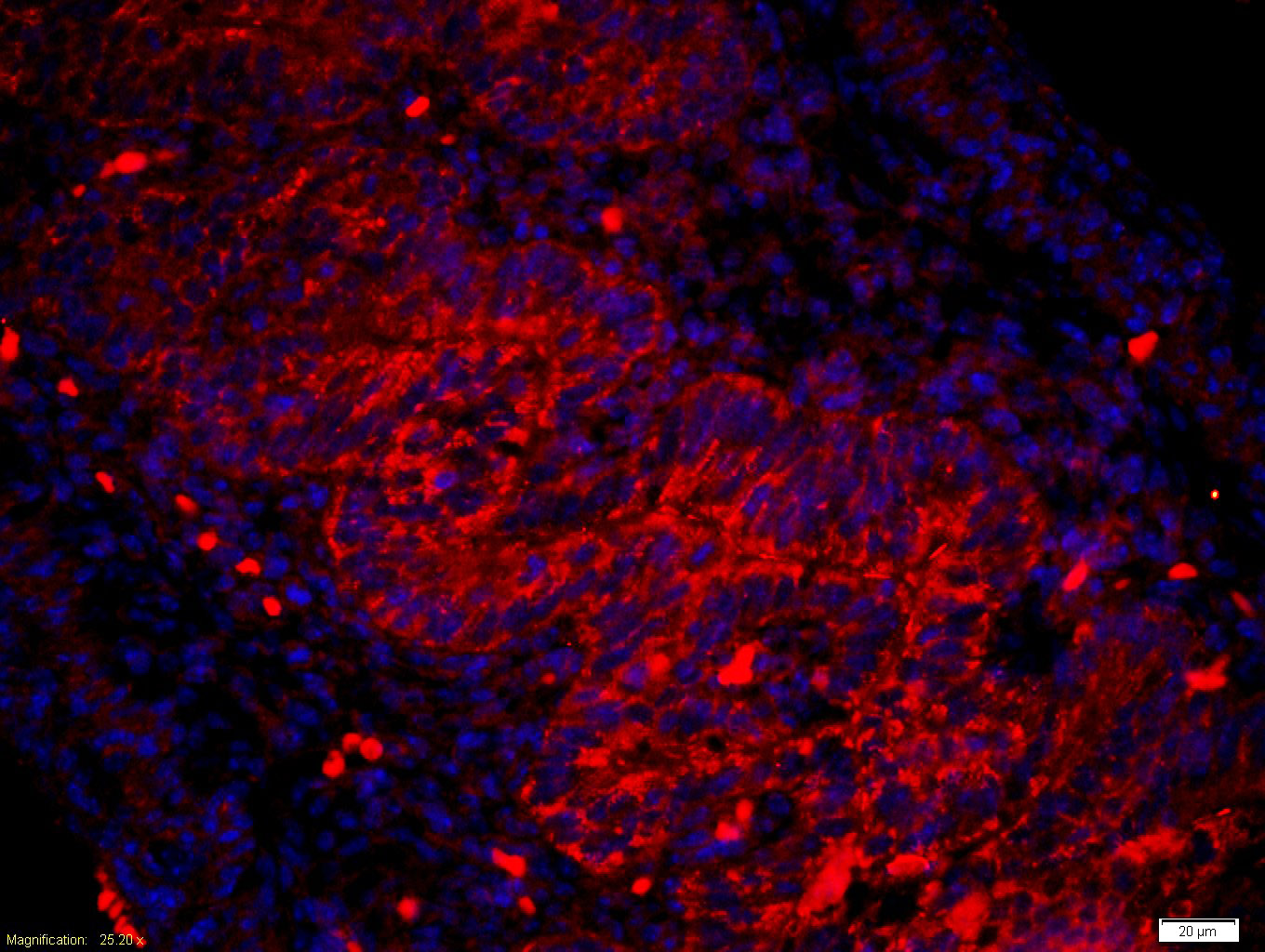
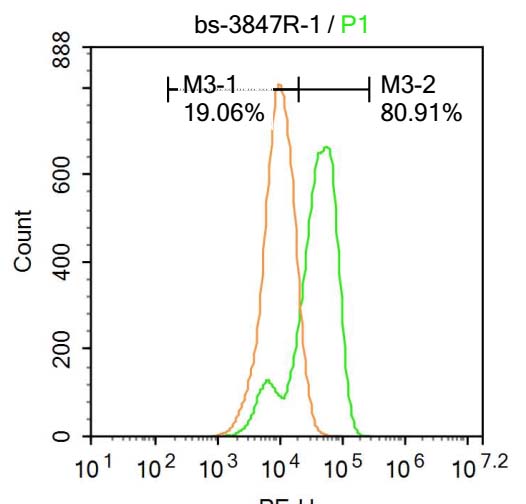


 +86 571 56623320
+86 571 56623320




